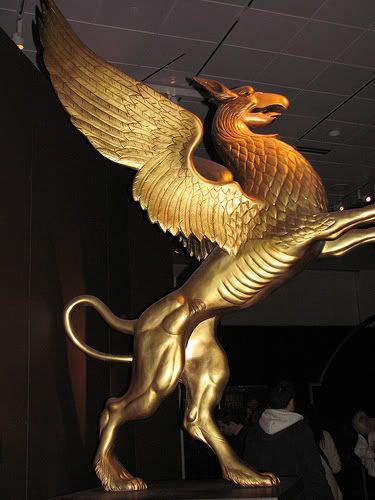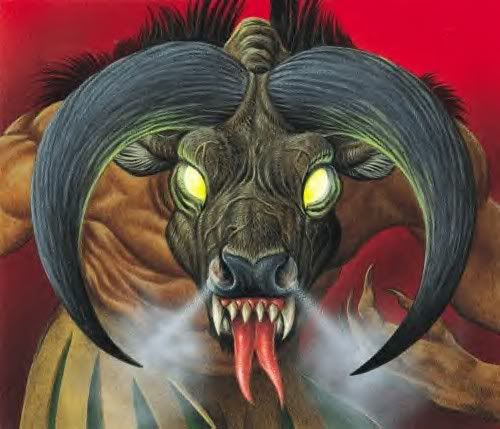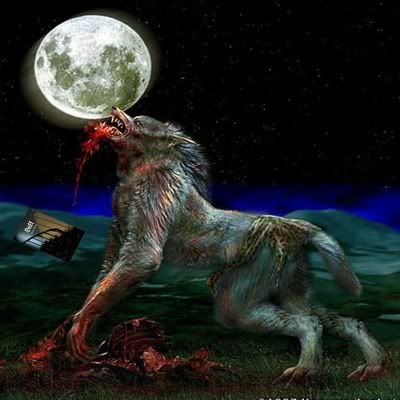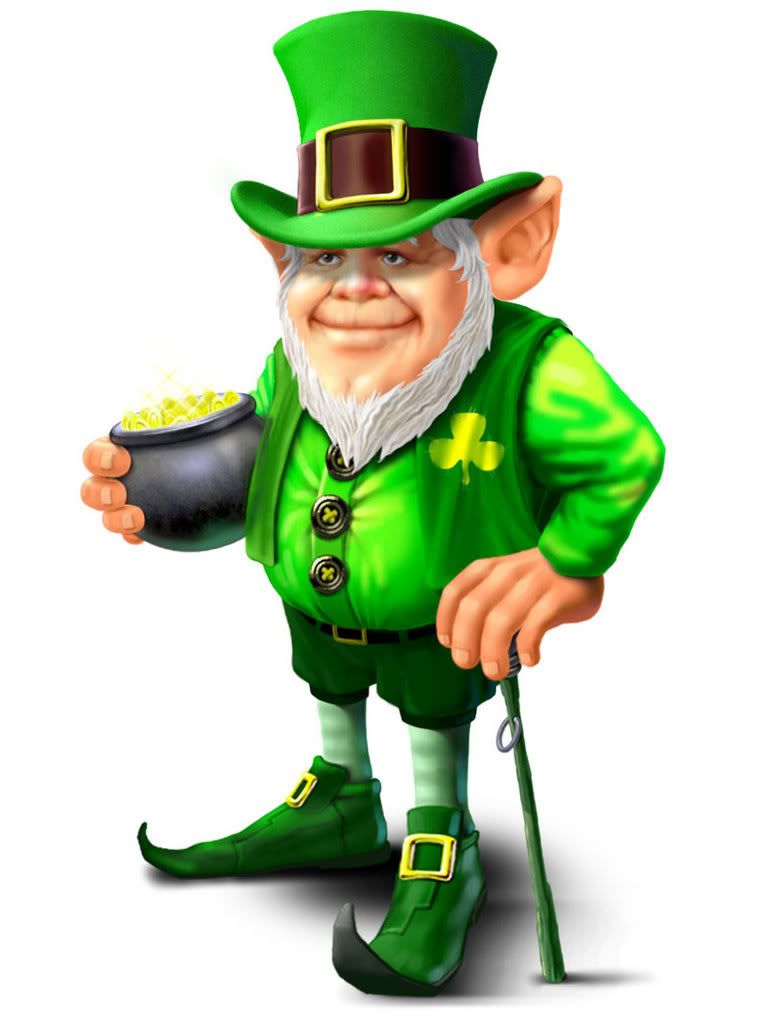| Topic: DRAGONS UNICORNS MERMAIDS PEGASUS OTHER MYTHIC ANIMALS | |
|---|---|
   |
|
|
|
|
|
Edited by
tazzops
on
Sat 07/16/11 07:48 PM
|
|
 Description The griffin or gryphon is a mythical quadruped with the foreparts of an eagle and the rear, tail and hindquarters of a lion. Its eagle-like head had pointed, upstanding ears like those of an ***. Feathers grew upon its head, neck and chest and the rest of the griffin’s body was covered in leonine fur, subtly colored in shades of tawny brown. Aelian said the wings of griffins were white and their necks were variegated in colour with blue feathers. The griffin claws were especially valuable as they were reputed to change color in the presence of poison, which is why they made useful drinking vessels. At times, it is portrayed with a long snake-like tail. In some traditions, only the female has wings. Its nests are made of gold and its eggs resemble agates. It is supposed to be of gigantic proportions, the morphology being left to our own deduction after we have been informed that one claw is the size of a cow's horn. There are a number of different types of griffins; the snake-griffin has a lion’s body, a snake’s head and a bird’s legs; the lion-griffin is lion-like but has hind legs shaped like those of a bird. The hippogryph, living far beyond the seas in the Rhiphaean Mountains, is the result of the rare breeding of a male gryphon and a filly. It has the head, wings and front legs of a gryphon, and the back and hind legs of a horse. It is a large powerful creature that can move through the air more swiftly than ligthning. It figured in several of the legends of Charlemagne as a mount for some of the knights. The Hypogriffin is a mix of a griffin and a horse. Origin The Griffin was known in Egypt before 3300 BC and is possibly more ancient still. Pliny believed griffins came from Northern Russia; Aeschylus thought they originated in Ethiopia; and Bulfinch wrote that their native country was India. Herodotus said that legends of griffins came from the Issedonians who lived beyond the Oural Mountains. Biedermann wrote later that it has typological antecedents in ancient Asia, especially in the Assyrian k'rub, which is also the source of the Hebrew cherub. Role Because of the griffin's strength and powers of sight, it was believed to guard hidden treasures and in particular the vast gold mines of India and Scythia. The Arimaspians, a bold, one-eyed race of humans, constantly tried to steal their treasure and eventually drove the griffins away the mountains. Because of its association with the Holy Grail, one of the treasures most commonly guarded by griffins was emeralds. Other popular treasures guarded by griffins were the Tree of Life, knowledge, and the roads to salvation. Greeks and Romans used griffin images to guard tombs. The griffin also became the adversary of serpents and basilisks, both of which were seen as embodiments of satanic demons. Powers In its body, the griffin is blessed with the speed, flight, and penetrating vision of the eagle and the strength, courage, and majesty of the lion.    |
|
|
|
|
|
Now thats a badazz cool creature
    I am so weird. I am so weird.
|
|
|
|
|
|
There is more information about them but it would nearly fill a page.
|
|
|
|
|
|
I will look more of them up on the internet, I like to go to youtube and sometimes they have music to all sortsa of these creatures, its really cool, I look up magical and fantasies on youtube it will take you there.

|
|
|
|
|
|
I already had some of this on the laptop.
|
|
|
|
|
    
|
|
|
|
|
|
Oh well just having some fun.
   
|
|
|
|
|
|
Thats what its all about, put your left arm in put your left arm out you do the hokey pokey and you turn yourself around thats what its all about, oops got carried away.
      
|
|
|
|
|
|
That is funny indeed dear lady, because when I get allot down. I do the Hokey Pokey and shake it all about by the time I'm done iam laughing so hard I feel better.
                         
|
|
|
|
|
 Harpies, in classical Greek mythology and in Virgil's Aeneid, were flying monsters who tormented people and snatched food and other objects. Their name translates as "snatchers." The Harpies, often but not always represented as a triad, were sisters connected with the winds. There were three or four Harpies, depending on the myth. In some myths, their parents were Gaia and the Old Man of the Sea. In others, their parents were children of the Sea, siblings, and thus the Harpies were born of incest. They were so hideous that their parents hid them away. They were released when the gods needed them to torment and punish. In Homer and other early representations, the Harpies were storm winds: Aello - squall or hurricane Okypete - swift-flying Celaeno - dark (as a storm cloud is dark) Podarge - swift-foot (mother, by Zephyrus the West Wind, of Xanthus and Balius, the horses of Achilles) The Harpies were depicted with women's faces and the bodies of vultures. Their wings, talons, and beaks were strong -- the talons depicted as of bronze, the beaks able to break rocks, the wings made of steel. In the myth of the Jason and the Argonauts, the Harpies were called by the gods to torture the Thracian king Phineus by pecking out his eyes and snatching the food from his table at every meal. Phineus made a deal with the Argonauts to drive the Harpies away. In the myth of Aeneas, the Harpies attacked Aeneas and his crew members. One Harpy predicted a time when the Trojans will eat their tables, and the Harpies all snatched the food of the Trojans on their journey. Less dramatically, the Harpies were believed to be responsible for snatching objects which were missing around the house. |
|
|
|
|
|
Eeewwwwww!!! Never heard of harpies, what strange creatures, bad creatures.
 
|
|
|
|
|
|
Eeewwwwww!!! Never heard of harpies, what strange creatures, bad creatures.   Kind of not so nice. Sending a hug so you are not scared. Hugs.   
|
|
|
|
|
   But it dosen't have anything to do with the recipe thread, this is totally a different topic But it dosen't have anything to do with the recipe thread, this is totally a different topic Oh well I like this kind of stuff. Be happy others post but I'm having fun.    I'll start posting recipes on cooking Hobbits. |
|
|
|
|
   But it dosen't have anything to do with the recipe thread, this is totally a different topic But it dosen't have anything to do with the recipe thread, this is totally a different topic Oh well I like this kind of stuff. Be happy others post but I'm having fun.    I'll start posting recipes on cooking Hobbits. Sounds like a plan to me sir.     
|
|
|
|
|
|
Edited by
tazzops
on
Sun 07/17/11 09:26 AM
|
|
 Minotaur Before he ascended the throne of Crete, Minos struggled with his brothers for the right to rule. Minos prayed to Poseidon to send him a snow-white bull, as a sign of approval by the gods for his reign. He promised to sacrifice the bull as an offering, and as a symbol of subservience. A beautiful white bull rose from the sea, but when Minos saw it, he coveted it for himself. He assumed that Poseidon would not mind, so he kept it and sacrificed the best specimen from his herd instead. When Poseidon learned about the deceit, he made Pasipha, Minos' wife, fall madly in love with the bull. She had Daedalus, the famous architect, make a wooden cow for her. Pasipha climbed into the decoy and fooled the white bull. The offspring of their lovemaking was a monster called the Minotaur. The creature had the head and tail of a bull on the body of a man. It caused such terror and destruction on Crete that Daedalus was summoned again, but this time by Minos himself. He ordered the architect to build a gigantic, intricate labyrinth from which escape would be impossible. The Minotaur was captured and locked in the labyrinth. Every year for nine years, seven youths and maidens came as tribute from Athens. These young people were also locked in the labyrinth for the Minotaur to feast upon. When the Greek hero Theseus reached Athens, he learned of the Minotaur and the sacrifices, and wanted to end this. He volunteered to go to Crete as one of the victims. Upon his arrival in Crete, he met Ariadne, Minos's daughter, who fell in love with him. She promised she would provide the means to escape from the maze if he agreed to marry her. When Theseus did, she gave him a simple ball of thread, which he was to fasten close to the entrance of the maze. He made his way through the maze, while unwinding the thread, and he stumbled upon the sleeping Minotaur. He beat it to death and led the others back to the entrance by following the thread. 
|
|
|
|
|
|
Edited by
tazzops
on
Sun 07/17/11 09:46 AM
|
|
  VAMPIRES 1. A preternatural being, commonly believed to be a reanimated corpse, that is said to suck the blood of sleeping persons at night. 2. According to Eastern European folklore, a corpse, animated by an departed soul or demon, that periodically leaves the grave and disturbs the living, until it is exhumed and impaled or burned. OR alternatively a person who has made a pact with the devil, selling his soul to him in exchange for nearly eternal life as long as the person sucks the blood from other people (and often kill them). In sense, you could say a vampire is a corpse that is not really dead although it retains more its human qualities than a lich or a zombie would. Basically you could also say that a vampire is a corpse that has been reanimated. It arises at night to drink the blood of the living to replenish itself. The word itself originated as the Slavic word obyri or obiri, which evolved into the Bulgarian vampire. Another word for vampire, nosferatu, comes from the Greek nosophoros, plague-carrier. Commonly it is said that vampires can not stand the light, the original believe is that they would die if they stepped out into the sun light. However the length of time it takes to kill them is unspecified, but the educated assumption is that it is seconds. The exception, of course, would be the original vampire which would be stronger than regular pure breed vampires. Theories have been put forward as well as stories, on weather the original vampire is fully or partially immune to light. None of them fully conclusive. Vampires are said to have pale skin, not have a reflection in mirrors, and grow fangs. Doctors believe there may be a medical explanation for the proliferation of vampire stories in Eastern Europe. Porphyria (also known as phorphyic hemophelia), a hereditary blood disease, was once widespread among the aristocracy. Patients were sensitive to light, developed brownish teeth, and had skin lesions. They were often told to drink blood from other people to replenish their own. Rabies also causes vampire-like symptoms, insomnia, delirium, and strange behavior. A rabies epidemic occurred in Transylvania around the time of Dracula, the world's most notorious vampire. In Romanian, they are called, "vampir". During the process of becoming a vampire, people would have nightmares until the creature returned. The story of Dracula: Dracula's real name was Vlad Tepes, he was called a vampire because of his cruel torturing methods. This includes, impaling citizens as he ate in front of them. He also held a rich feast, and all that came to it, he made them build a castle for him. Records prove that he was indeed a king of Romania and that he died, by an opposing army's hands. The enemies of Romania at the time were Turks. The emperor of the enemy country ordered his army to bring Vlad's head to him, as proof he was dead. And they did so. Dracul means Dragon/Demon Dracula means Son of the Dragon/Demon. Vlad Tepes III also known as Vlad Draculea, Kazikli Voyvoidawas a ruler of Wallachia for the following terms- 1448, 1456-1462, 1476. he was born November 8th 1431 in Sighisoara, Transylvania and died at the hands of the Ottoman in December 1476 at Wallachia. On Easter, 1459 he arrested all the boyar families as an act of revenge for the killing of his father. He impaled the older ones on stakes while forcing the others to march from the capitol to the town of Poenari, some 50 miles away. He then ordered the survivors to build a fortress on the ruins of an older outpost which overlooked the Arges river. Vlad became quite known for his cruelty and brutal techniques of punishment; people were often skinned, boiled, decapitated, blinded, strangled, hanged, burned, roasted, hacked, nailed, buried alive, stabbed and so on. He also liked to cut off noses, ears, sexual organs and limbs. But his all time favourite form of torture was impalement on stakes, hence the surname of Tepes-meaning the Impaler in Romanian. The Turks even called him "Kaziglu Bey" - Impaler Prince. His philosophy on honesty and order was known throughout the land. Almost any crime be it lying and stealing to killing could be punishable by impalement. This law was so effective that he placed a gold cup in the square, anybody could use this cup to drink from the well but the cup must remain in the square. The cup was never stolen or removed during Vlads whole reign. One day, a man had come to drink from the cup but wound up stealing it. He was caught and taken to the throne room. Vlad, while sitting on his throne, had asked which hand the theif had used to take the cup with. The man had showed Vlad his left hand. Vlad had called his courtsmen and ordered them to cut off the theif's left hand. He said "Let that be a lesson to you to never steal." These stories are not fake and have been proven. Please do not report this page for misinformation. Origin of Myths: Although, there have been many superstitions and beliefs about the origin of such theories, the Slavic vampire myths interpenetrate all the others. One such example of these pagan beliefs is believing in the soul after death. Much vampire folklore originated in Hungary and the Slavic areas of Eastern Europe and Western Russia. In Slavic culture, they believed that a vampire was a person who abducted a decomposing dead body and sought to feed on the blood for their own survival. In many other cultures they believe that a vampire was the result of making a deal with the devil or much more commonly, a demon. Ancient Legends: Vampire legends have existed all around the world. Granted, in different forms and shapes and ways, but it can be expected that different vampires from different regions differed in their appearances. For example, vampires from Bulgaria had only one nostril; whereas, those from Transylvania were pale and were said to have long fingernails. In Chinese Culture, it was believed that if a cat or dog jumped over a dead body, the body would turn into an undead. In Russian folklore, vampires were witches who once rebelled against the church, when they were alive. In Egyptian mythology, Goddess Sekhmet was said to be blood thirsty, which could be a possible relationship to vampirism. However it was the The Persian Civilization who was the first to have had stories of blood-drinking creatures as far as records can tell. In folkloric tales, undead vampires often visited loved ones and caused mischief or deaths in the neighbourhoods they inhabited when they were alive. They wore shrouds and were often described as bloated and of ruddy or dark countenance, markedly different from today's gaunt, pale vampire which dates from the early Nineteenth Century. Although vampiric sorts of entities have been recorded in many cultures, the term vampire was not popularised until the early 18th century, after an influx of vampire superstition into Western Europe from areas where vampire legends were frequent, such as the Balkans and Eastern Europe, although local variants were also known by different names, such as Vampir in Serbia, vrykolakas in Greece and strigoi in Romania. The Apotamkin is considered to be the Native Americans version of a vampire. In European folklore, a vampire is a corpse that rises from the grave and sucks blood from the living. According to some accounts, the dead become vampires because demons or evil spirits enter their bodies. Vampires are also said to be dead werewolves, witches, criminals, suicides, and heretics: persons whose's beliefs are contrary to church doctrine. In some legends, the victims of vampire attacks also turn into vampires themselves. The principal characteristic of the vampire is that when buried it does not decay like a normal corpse. Instead, it leaves the grave at night to search for victims. According to tradition, a vampire remains active as long as it can obtain blood. Legends of bloodsucking creatures are found in many cultures throughout history. The vampires, along with Dragons and wearwolves, are also a popular literary subject, hence why there are numerous descriptions of the origin, nature, powers, etc. of vampires. What seems to be universal about vampire myths is their connection with the fear of death and their desire for immortality.  
|
|
|
|
|
|
Edited by
tazzops
on
Sun 07/17/11 10:11 AM
|
|
 Werewolf In Greek Myth, Lycaos was the extraordinarily cruel king of Arcadia. Lycaos sought favor with Zeus by offering him the flesh of a young child. Enraged, Zeus turned Lycaos into a wolf. The belief that certain people can turn themselves into animals, especially wolves, and roam the earth doing evil became widespread. The word "werewolf" means "manwolf" since wer is the Saxon word for man. Werewolves love to eat babies and corpses. silver bullets or arrows are not the only thing that can kill a werewolf. After death, a werewolf resumes his human identity. In the Middle Ages, many Europeans believed wolves were tools of the devil and the animals were ruthlessly hunted. Epileptics and the mentally ill were often brought to court and accused of being werewolves. Today, psychologists use the term "lycanthrope" to describe a mentally ill person who actually believes he has been changed into an animal. European cultures Many European countries and cultures influenced by them have stories of werewolves, including Albania (oik), France (loup-garou), Greece (lycanthropos), Spain (hombre lobo), Mexico (hombre lobo and nahual), Bulgaria (varkolak), Turkey (kurtadam), Czech Republic/Slovakia (vlkodlak), Serbia/Montenegro/Bosnia (vukodlak, вукодлак), Russia (vourdalak, оборотень), Ukraine (vovkulak(a), vurdalak(a), vovkun, перевертень), Croatia (vukodlak), Poland (wilkołak), Romania (vârcolac, priculici), Macedonia (vrkolak), Scotland (werewolf, wulver), England (werewolf), Ireland (faoladh or conriocht), Germany (Werwolf), the Netherlands (weerwolf), Denmark/Sweden/Norway (Varulv), Norway/Iceland (kveld-ulf, varúlfur), Galicia (lobisón), Portugal/ (lobisomem), Lithuania (vilkolakis and vilkatlakis), Latvia (vilkatis and vilkacis), Andorra/Catalonia (home llop), Hungary (Vérfarkas and Farkasember), Estonia (libahunt), Finland (ihmissusi and vironsusi), and Italy (lupo mannaro). In northern Europe, there are also tales about people changing into animals including bears, as well as wolves. Werewolves in European tradition were sometimes innocent folk suffering from the witchcraft of others, or simply from an unhappy fate, and who, as wolves, behaved in a truly touching fashion, adoring and protecting their human benefactors. In Marie de France's poem Bisclavret (c. 1200), the nobleman Bizuneh, for reasons not described in the lai, had to transform into a wolf every week. When his treacherous wife stole his clothing needed to restore his human form, he escaped the king's wolf hunt by imploring the king for mercy and accompanied the king thereafter. His behaviour at court was so much gentler than when his wife and her new husband appeared at court, that his hateful attack on the couple was deemed justly motivated, and the truth was revealed. Other tales of this sort include William and the Werewolf (translated from French into English ca. 1350), and the German fairy tales Märchen, in which several aristocrats temporarily transform into beasts. See Snow White and Rose Red, where the tame bear is really a bewitched prince, and The Golden Bird where the talking fox is also a man. The legends of ulfhednar mentioned in Vatnsdœla saga, Haraldskvæði, and the Völsunga saga resemble some werewolf legends. The ulfhednar were fighters similar to the berserkers, who were dressed in bear hides and reputed to channel the spirits of these animals to enhance effectiveness in battle. These warriors were resistant to pain and killed viciously in battle, much like wild animals. Ulfhednar and berserkers are closely associated with the Norse god Odin. In Latvian folklore, a vilkacis was someone who transformed into a wolf-like monster, which could be benevolent at times. Another collection of stories concern the skin-walkers. The vilkacis and skin-walkers probably have a common origin in Proto-Indo-European society, where a class of young unwed warriors were apparently associated with wolves. According to the first dictionary of modern Serbian language (published by Vuk Stefanović-Karadžić in 1818) vukodlak / вукодлак (werewolf) and vampir / вампир (vampire) are synonyms, meaning a man who returns from his grave for purposes of fornicating with his widow. The dictionary states this to be a common folk tale. Common amongst the Kashubs, and the Serbs and Slovenes of what is now northern Poland, was the belief that if a child was born with hair, a birthmark or a caul on their head, they were supposed to possess shape-shifting abilities. Though capable of turning into any animal they wished, it was commonly believed that such people preferred to turn into a wolf. According to Armenian lore, there are women who, in consequence of deadly sins, are condemned to spend seven years in wolf form. In a typical account, a condemned woman is visited by a wolfskin-toting spirit, who orders her to wear the skin, which causes her to acquire frightful cravings for human flesh soon after. With her better nature overcome, the she-wolf devours each of her own children, then her relatives' children in order of relationship, and finally the children of strangers. She wanders only at night, with doors and locks springing open at her approach. When morning arrives, she reverts to human form and removes her wolfskin. The transformation is generally said to be involuntary, but there are alternate versions involving voluntary metamorphosis, where the women can transform at will. The 11th Century Russian Prince Vseslav of Polotsk was considered to have been a Werewolf, capable of moving at supehuman speeds, as recounted in The Tale of Igor's Campaign: "Vseslav the prince judged men; as prince, he ruled towns; but at night he prowled in the guise of a wolf. From Kiev, prowling, he reached, before the cocks crew, Tmutorokan. The path of Great Sun, as a wolf, prowling, he crossed. For him in Polotsk they rang for matins early at St. Sophia the bells; but he heard the ringing in Kiev." There were numerous reports of werewolf attacks—and consequent court trials—in sixteenth century France. In some of the cases there was clear evidence against the accused of murder and cannibalism, but none of association with wolves; in other cases people have been extremly terrified by such creatures, such as that of Gilles Garnier in Dole in 1573, there was clear evidence against some wolf but none against the accused. The loup-garou eventually ceased to be regarded as a dangerous heretic and reverted to the pre-Christian notion of a "man-wolf-fiend." The lubins or lupins were usually female and shy in contrast to the aggressive loup-garous. Some French werewolf lore is based on documented events caused by the full moon. The Beast of Gévaudan terrorized the general area of the former province of Gévaudan, now called Lozère, in sout  |
|
|
|
|
|
Edited by
tazzops
on
Sun 07/17/11 10:38 AM
|
|
 The name leprechaun may have derived from the Irish leath bhrogan (shoemaker), although its origins may lie in luacharma'n (Irish for pygmy). These apparently aged, diminutive men are frequently to be found in an intoxicated state, caused by home-brew poteen. However they never become so drunk that the hand which holds the hammer becomes unsteady and their shoemaker's work affected. Leprechauns have also become self-appointed guardians of ancient treasure (left by the Danes when they marauded through Ireland), burying it in crocks or pots. This may be one reason why leprechauns tend to avoid contact with humans whom they regard as foolish, flighty (and greedy?) creatures. If caught by a mortal, he will promise great wealth if allowed to go free. He carries two leather pouches. In one there is a silver shilling, a magical coin that returns to the purse each time it is paid out. In the other he carries a gold coin which he uses to try and bribe his way out of difficult situations. This coin usually turns to leaves or ashes once the leprechaun has parted with it.However, you must never take your eye off him, for he can vanish in an instant. The leprechaun 'family' appears split into two distinct groups - leprechaun and cluricaun. Cluricauns may steal or borrow almost anything, creating mayhem in houses during the hours of darkness, raiding wine cellars and larders. They will also harness sheep, goats, dogs and even domestic fowl and ride them throughout the country at night. Although the leprechaun has been described as Ireland's national fairy, this name was originally only used in the north Leinster area. Variants include lurachmain, lurican, lurgadhan. Very small sprites who sometimes live in farmhouses or wine cellars. They are known to aid humans and perform small labors for them. Sometimes they ask humans for supplies and furniture, for which in return they give objects which bring luck and fortune. Leprechauns are called fairy cobblers, for they make shoes for elves (but always one shoe, never a pair). They are seen quite often by humans and are described as merry little fellows gaily dressed in old-fashioned clothes; green, with a red cap, leather apron, and buckled shoes. When they finish their daily tasks, leprechauns like to organize wild feast, during which time they are referred to as cluricauns. These (often drunk) cluricauns can then be seen riding in moonlight on the back of a dog or a sheep. According to popular belief, a leprechaun possesses a treasure (usually a pot of gold) which a human may obtain if he succeeds in capturing one, which is extremely difficult. Even after capture, a person may not take his eyes off of him for an instant, for then he will vanish. Leprechauns are mainly found in Irish folklore.  |
|
|
|
|
 Irish myths and legends can provide a lot of insight into the people of the Emerald Isle and their unique culture. One of the most enduring myths of the Irish people is that of…the Banshee. According to legend, the Banshee floats through the forests of Ireland in the dead of night, wailing and keening… Traditionally, the Banshee is depicted as a female ghost or spirit, in keeping with the Irish penchant for faeries, leprechauns, and other magical creatures. But who or what is she…and what makes her so legendary..? There is no one answer…this mystical spirit is sometimes perceived as a faerie or an Angel of Death. She has other names, too, such as The White Lady of Sorrow, or the Woman of Peace. The Banshee cries her frightening, haunting cries to warn human beings of impending death…to hear her doleful voice is to know that someone will soon pass to the other side… Sin And Superstition… In the Middle Ages, the Irish truly believed in the presence of such creatures, who were thought to watch over the families of the Emerald Isle. A Banshee would stay close to each family until all of its members passed away and were safely buried… Sin and consequences are also under the domain of the mythical spirit; if a person lived a life of selfishness or decadence or committed cruel acts during their lifetime, it was believed that their soul would remain close to the earth, suffering in penance. The Banshee would always be there to make certain this punishment was carried out… Conversely, if a person lived a life filled with kindness and selflessness and good deeds, their soul would dwell in peace and happiness for evermore…although still tied to the earth, the soul would be contented - the Banshee would make sure of that. The Many Faces And Forms Of The Banshee… These deeply-rooted superstitions kept the legend of the Banshee alive through the centuries. As the myth of the Banshee took hold, more details about the appearance of this ghostly apparition were revealed. Some would see the Banshee as a fearsome old hag, frightful to behold…while others would see a beautiful woman… In some cases, the Banshee was reported to look like a simple washerwoman or laundress…only the clothes she tended to were blood-stained…another portent of impending doom for an unlucky Irish man or woman… The Banshee is usually perceived as being quite fair, with long, pale hair that she grooms with a special silver comb…according to superstition, finding a comb on the ground and picking it up is extremely bad luck, because a Banshee has placed it there to lure the unsuspecting and lead them to ruin… The Roots Of The Legend… It is believed that the myth of the Banshee developed due to the Irish tradition of the lament; women would sing a lament for the dead at funerals, and for some in the village, this song would carry through the air and become the first signal that someone had died. These funeral singers were known as “keeners”, and their services were highly prized. From the natural honoring of the dead, the legend of the Banshee began… As time passed, the myth of the wailing Irish spirit became more colorful and supernatural… Today, the Irish faerie still appears in art, literature, and music, hearkening back to a very different time… |
|
|
|
|








